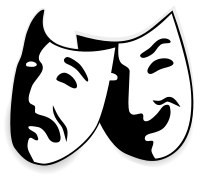Does the short film 'Tick Tock' follow Todorov's narrative theory of equilibrium?
Todorov's theory of equilibrium is not evident in the short film Tick Tock as it doesn't follow a conventional, linear story arc. Instead, a reverse chronological narrative is established through the use of editing. The editing uses a rewind technique to reveal the storyline. The pace is fast as it appears to be at double speed, echoing the urgency in the narrative.
The short film has a closed narrative, as theorised by Barthes, as the meaning is clear and resolves at the end. Barthes also theorised that an enigma code is crucial in engaging an audience in a narrative which was created through the use of sound. In the short film all of the dialogue is muffled and we are guided by subtitles instead. There is a non-diegetic sound of a heartbeat which provides a surreal atmosphere and intensifies the situation, further echoing the narrative.
Bordwell and Thompson state that a narrative is the product of a cause and effect relationship, and this can be seen through the use of key props used in the mise en scene, such as the clock, is became apparent that the character had limited time, due to the pill taking. The clock represented the urgency of the situation caused by the pills and near-death-experience, the visit to the girlfriend acted as the effect - the order of this cause-effect relationship is inverted due to the rewind technique. This reaction could create empathy between the audience and the situation, ensuring the audience is invested in the narrative and that the short film has a purpose.














